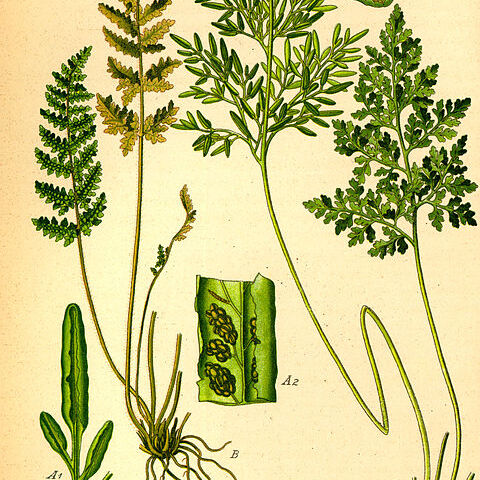Plants small, usually on rocks. Rhizomes short, erect or ascending with dictyostele, or occasionally long creeping with siphonostele; scales colorless or brownish, thin. Fronds strongly dimorphic, clustered or rarely scattered, sterile fronds shorter than fertile ones; stipe dark brown proximally, light brown to straw-colored distally, grooved adaxially, scaly. Sterile fronds: lamina broadly ovate or oblong, 2-4-pinnate, membranous to leathery, glabrous. Fertile fronds: lamina 2-or 3-pinnate. Ultimate segments of sterile lamina ovate, spatulate, elliptic, or fan-shaped; fertile segments linear or elongate oblong. Veins free, pinnately branched, simple or forked distally; hydathodes often sunken below surface on dried specimens. False indusia broad, clearly marginal, continuous, making a single fertile segment podlike. Sori borne at vein tips, orbicular or elliptic, confluent when mature. Spores yellow, tetrahedral, trilete, verrucose. x = 30.
Lvs small, evergreen or deciduous, dimorphic; petiole weak, glabrous or merely hairy, scaly only at the base, stramineous to greenish at least distally; blades glabrous, bipinnate to tripinnate, the sterile ones spreading, membranous, with largely green rachis, the ultimate segments dentate or crenate, the veins not reaching the margin; fertile lvs more erect and surpassing the sterile ones, with narrow, entire ultimate segments, the revolute margin modified into a false indusium covering the sori, which are borne on the vein-tips. 2–4, N. Hemisphere.

